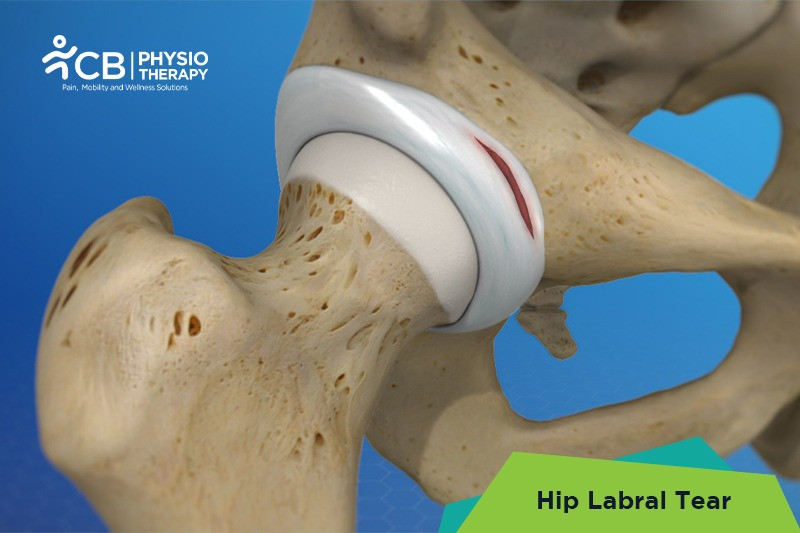
A hip labral tear is a painful condition in which the tissue that surrounds the socket of the hip joint is torn or damaged. A hip labral tear is the ring of cartilage or labrum, responsible for cushioning the hip joint, acts like a rubber seal to help hold the ball securely within the hip socket.
Though there are many causes for a hip labral tear. Athletes commonly suffer from this condition, other causes might be:
Most of the hip labral tears have no signs or symptoms. But some patients may have the following symptoms:
Pathology:
Hip Labral tear causes pain in the anterior side of the hip or the groin. It occurs due to excessive force on the hip joint and results in a tear which decreases the acetabular contact area and thus increases stress, causing articular damage, and destabilizing the hip joint.
Physical examination:
Pain and range of motion are checked by evaluating the hip joint and leg, in various positions.
X-rays:
X-rays help to visualize the bone and check for fractures and any abnormalities.
Magnetic resonance imaging(MRI):
Magnetic resonance imaging (MRI) provides detailed images of the soft tissues by injecting contrast material into the hip joint space to make a labral tear easier to see.
Treatment depends on the severity of the symptoms. Some patients may recover with conservative treatment but others might require arthroscopic surgery to repair or remove the torn portion of the labrum, in this surgical tools and a fiber-optic camera are inserted through small incisions in the skin. The torn piece of labrum or repair of the torn tissue by sewing it back together is done depending on the extent of the tear.
Medications: Non-steroidal anti-inflammatory drugs, Analgesics, etc.
Note: Medicines should not be taken without the doctor’s prescription.
Physiotherapy treatment for a hip labral tear
The physiotherapist uses exercises to maximize the hip range of motion and strengthen and stabilize the hip and core. Physiotherapists help to avoid movements that put stress on the hip joint.
Ice therapy helps to decrease pain and inflammation.
Transcutaneous electrical stimulations (Tens):
Transcutaneous electrical stimulations (TENS) are effective in reducing and relieving hip pain.
Shockwave therapy helps to decrease the restrictions in tissue and thus causes an active movement.
Low-level laser therapy:
Laser therapy helps to decrease hip pain and inflammation, it also speeds up the healing process.
Kinesio-taping helps to decrease tension and facilitates the gastrocnemius muscle.
Manual therapy is a hands-on treatment used to gently move the muscles and joints to decrease pain, increase circulation, improve motion and strength.
Movement reeducation:
Due to the improper movement of the back, there can be increased tension at the hip joint. Thus, self-stretching techniques are taught for the lower body to decrease pressure and restore normal motion in the back, hip, and leg.
Muscle strengthening:
Muscle strengthening exercises are advised for muscle weaknesses or imbalances, which may cause hip pain. Based on the patient’s needs the physiotherapist designs a safe, individualized, progressive resistance program that includes core and lower extremity strengthening exercises. These exercises can be started by lying down and progressed to performing exercises in a standing position.
Hydrotherapy:
Hydrotherapy can be advised, as the movement in water results in an improvement in gait without causing unnecessary stress to the healing tissue like jogging in the water, etc.
Functional training:
Functional training is given once pain, strength, and motion show improvement, the patient is trained back safely into more demanding activities. Based on the assessment and goals, the physiotherapist creates a program to use and move the body correctly and safely. Body safe, controlled movements are taught to minimize tension on the hip.
The patient is advised to change any external factor causing the pain, such as certain exercises, footwear, or the number of exercises performed. Physiotherapist helps a patient to learn proper body movements to lessen the possibility of injury. After recovery, the patient is advised to continue the mobility and muscle strengthening exercises taught by the physiotherapist.
Select your City to find & connect with our experts regarding Physiotherapy for Hip Labral Tear